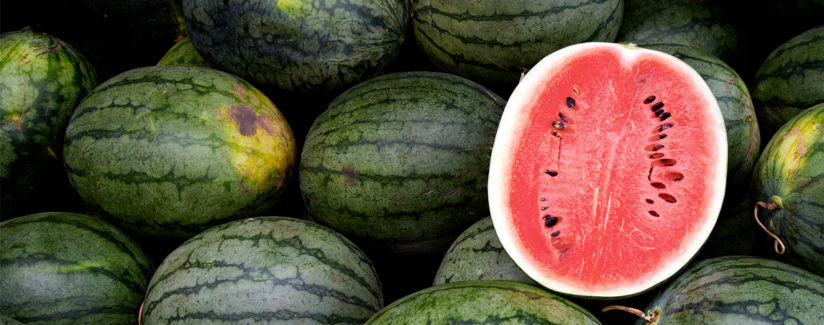
Helpful Tips for Picking a Watermelon
06/27/2017
One of our staffers at Best Food Facts recently came across an article that claimed there were a number of tricks on how to pick the perfect watermelon. While we were very intrigued and excited by these tips, we wanted to know if there was any scientific validity to them or if they were just old wives’ tales. We connected with Stephanie Barlow, senior director of communications at the National Watermelon Promotion Board, to pick her mind about one of summer’s tasty treats.
Why is it hard to define just one way to pick the best watermelon? Because there are so many types such as seedless watermelons and picnic watermelons.
“There are many ways to pick out a watermelon. At the Watermelon Board, we represent and promote all varieties of all watermelon equally, and nationally. Therefore, our selection tips are rather broad so that they are applicable to shoppers no matter the type of watermelon they are selecting from, no matter the region,” Barlow said.
However, one thing to look for when choosing your watermelon are yellow ground spots.
“[We] prefer the color indicator of butter yellow. Too bright of a yellow color might indicate over ripeness,” Barlow said.
Still eager to hunt down the perfect tips, we found these recommendations from the Watermelon Board to pick a good watermelon.
It’s as easy as 1, 2, 3.
1. Look the watermelon over.
You are looking for a firm, symmetrical watermelon that is free from bruises, cuts or dents.
2. Lift it up.
The watermelon should be heavy for its size. Watermelon is 92 percent water, so most of the weight is water.
3. Turn it over.
The underside of the watermelon should have a creamy yellow spot from where it sat on the ground and ripened in the sun.
Even though these haven’t been scientifically verified, we think these old wives tales are worth mentioning.
- Look for the webbing – these are brown spider web or vein-like scabs that appear in and around the ground spots.
- Take gender into account – the longer shaped melons are “male” and tend to be watery. The round and stout watermelons are “female” and are sweeter.
- Size – the best tasting watermelons are average-sized.
- Look at the tail – the tail indicated its ripeness. The browner and drier the tail looks, the better the odds that it was picked at a prime ripe stage and will taste better.
While Barlow states that these tips are not scientifically valid based on the lack of ability to corroborate these methods. Anxious to try, we went to the store and tried these tips ourselves and it worked! However, that was only one time and we know that means it’s not scientifically valid… yet.

























